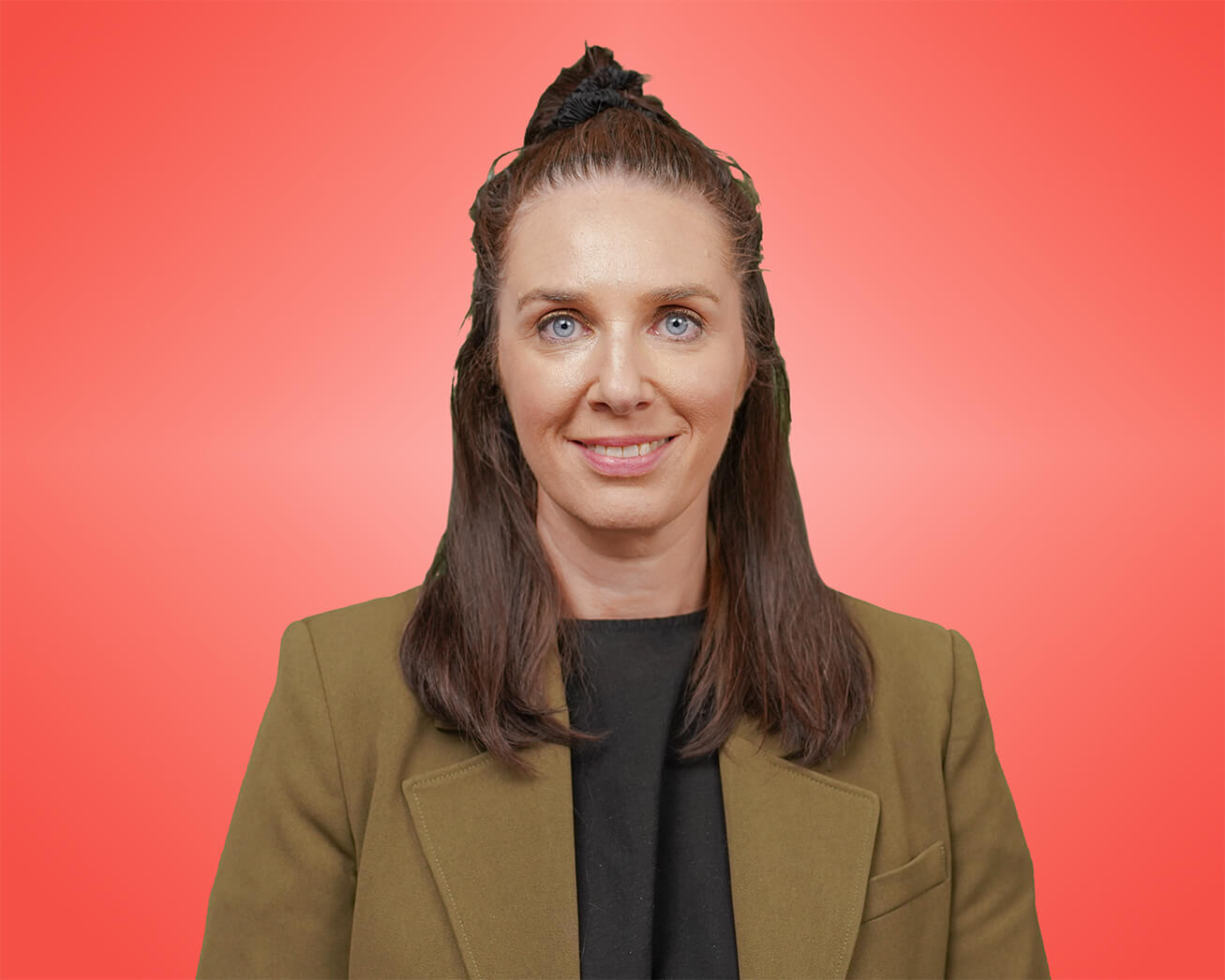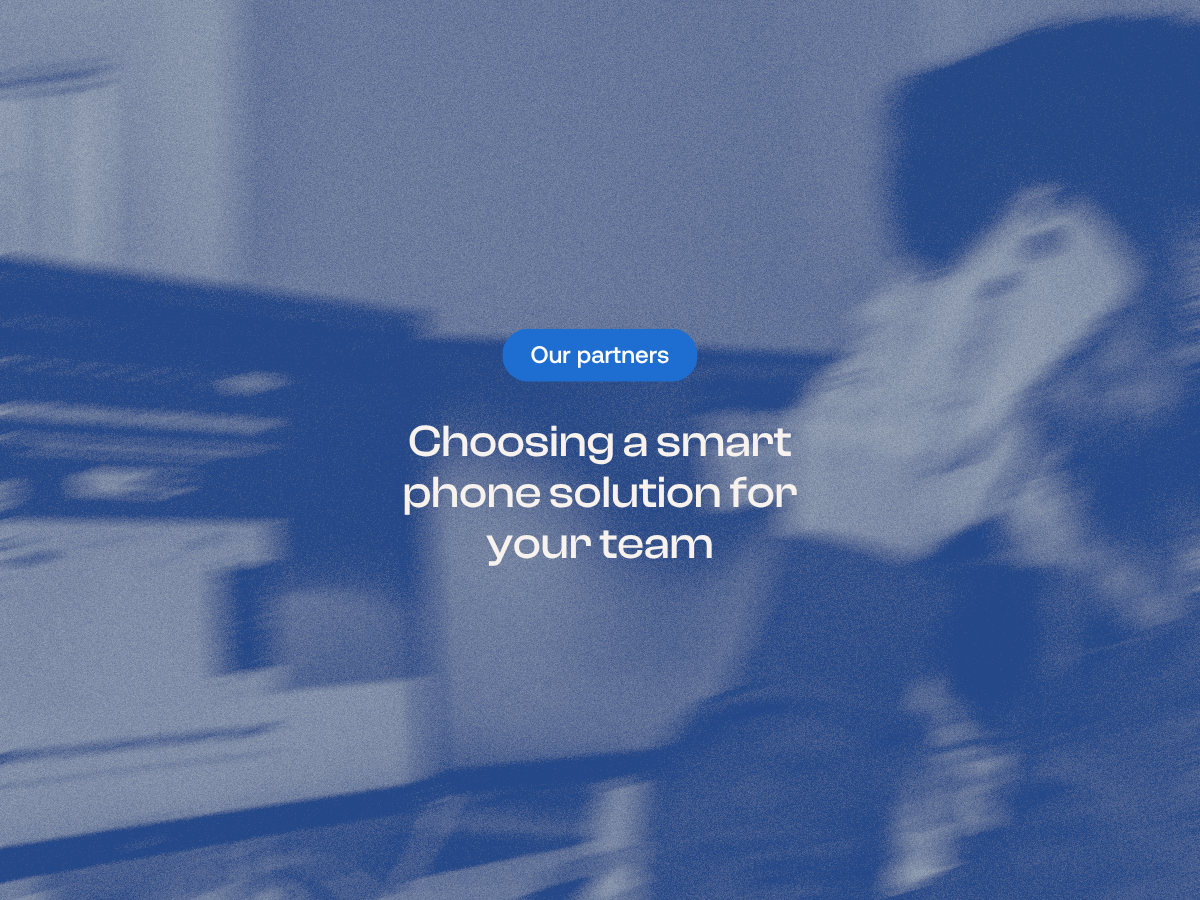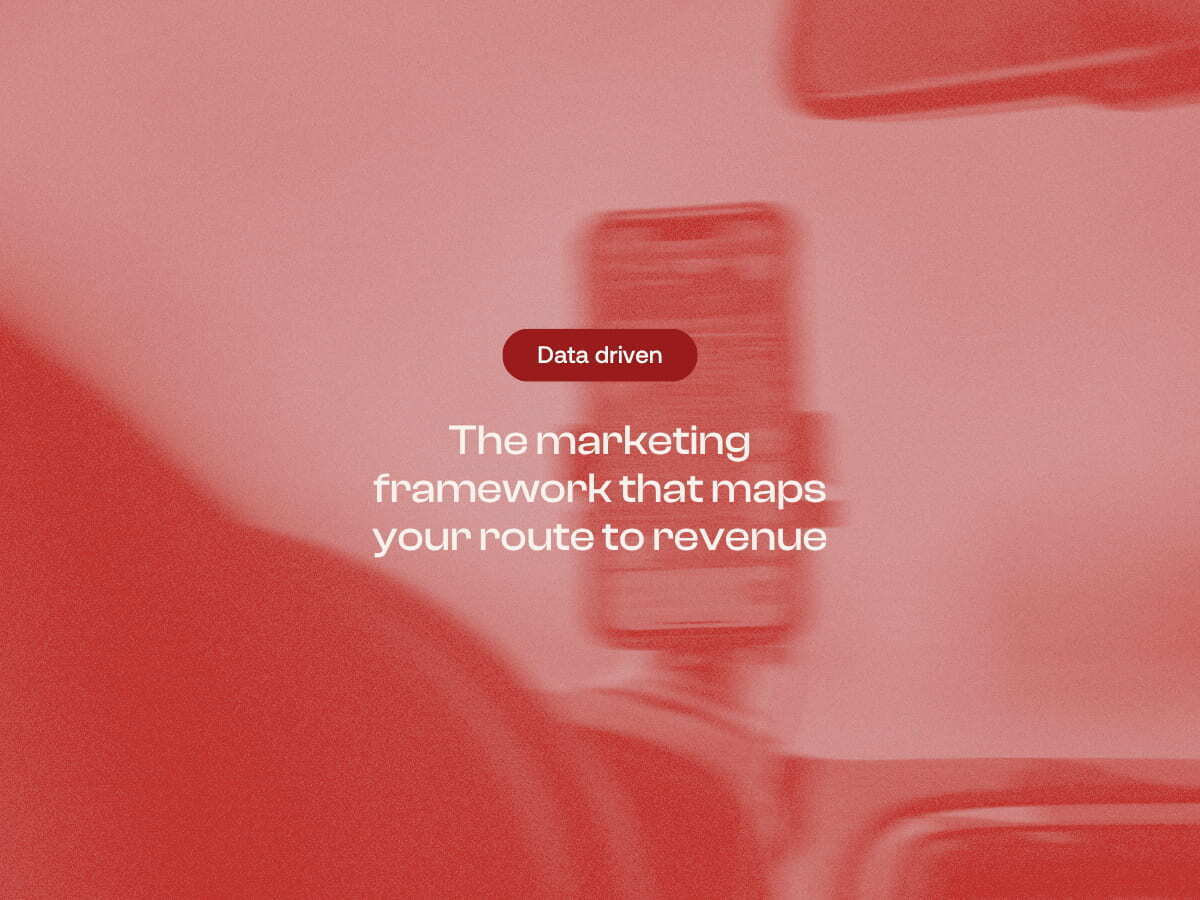So... you've hired a robot: meet your HubSpot AI Agents

Last updated: 19 November 2025
AI is here. But what does it actually mean for your job?
Firstly, it means you now have a new job title… and it’s AI Manager.
Forget spreadsheets and endless meetings, your new mission is liberation. By “hiring” AI for the robotic work, your human team can finally focus on being human.
The first step in your new role is to meet your candidates, the HubSpot Breeze Agents and Assistants. They are incredibly fast and tireless, working 24/7, and they don’t mind repetitive tasks or admin.
However, remember the key to management:hey require exact instructions, have no common sense and are only as good as their manager (you).
Here is your essential guide to onboarding your new AI team and how you can make them work for you… literally!
Meet the AI candidates
Phase 1: The foundation - data and operations
The first thing you want to do is build the foundation for your entire sales and marketing strategy. That foundation sits in data and operations. The candidates we’re onboarding here will manage and automate data assets and handle your go-to-market operations.
Candidate 1: The Data Agent
If your biggest pain point is manual research, meet your answer to data-digging. This AI research assistant is the employee you hire when you need to get deep lead insights without hours of grunt work. This agent connects to all your data, from your CRM to conversations and even the web. Its primary job is to pre-qualify leads for you and find personalised insights.
Let’s say you want to get deep insights without hours of manual research. This is the HubSpot Agent for you. For sales teams, it’s a fast way to prep before a sales call. For marketing teams, you can create deep segmentation and find new audiences.
How to put your new employee to work
The beauty of the Data Agent lies in its ability to inject research directly into your workflow.
You can instruct the agent to populate data directly into properties in your CRM using Smart Properties. A sales rep can use a Smart Property to quickly get the latest company information before a call.
Smart Actions will also automate research by adding AI-researched insights directly into your workflows. You can use this to find a connection with a prospect. This helps you create a very personalised email to reach out, all automatically.
For operation leaders, Smart Columns do research in the Data Studio. They gather insights from information inside and outside your CRM to fill columns.
Candidate 2: The ABM (Account-based marketing) Landing Page Agent
Your next strategic hire solves a massive resource drain. The bottleneck of manually creating personalised landing pages. The ABM Landing Page Agent is made to automate creating unique, personalised landing pages for target accounts.
How to put your new employee to work
This agent takes the entire process off your hands. It creates a custom landing page for a specific target account. It uses your CRM data to do this.
But it doesn’t stop there. It uses AI to research the target's company website. It figures out their value proposition and makes sure the messaging is relevant.
When a new personalised page is created for an account, the agent automatically notifies the related sales representative too.
Below, you can see we’ve created a personalised LP for Adelaide University. The agent looked at the current website. They created a landing page and a plan for the messaging and tone.

We’ve built the foundations, now it’s time to find some candidates to attract our audience.
Phase 2 Attract - brand and social
Now that the foundation is rock solid, it’s your job to attract an audience. This starts with ensuring every piece of content speaks with your voice.
Candidate 3: The Brand Assistant
This is one of the most important hires you can make for your brand. You may notice it’s not an agent but an assistant.
Think of it as your ultimate brand guardian or Chief of Staff. It helps you manage agents and their content. This ensures they follow your rules.
Let’s say you want to scale AI content but you’re worried it will sound generic or off-brand. This candidate alleviates that concern, enabling you to produce content while preserving your brand's identity.
How to onboard your brand guardian
You must train this assistant by giving it its ‘memory’ and its rules.
Brand voice learning and custom rules
This involves setting the instructions for the HubSpot Assistant, telling it to check all copy for off-brand tone and jargon. You can also set non-negotiable rules like “use Australian English” and “Don’t use em dashes.”
Brand knowledge base
This is the assistant’s central memory. You give it access to vaults like your Brand Kit, the Ideal Customer Profiles and the Products and Services. This is how it will learn your voice and is pulled from your main HubSpot Brand Voice settings.
The manager’s key tip
Make sure your core company information and brand voice are defined in your global HubSpot settings. You’ll need admin access to do this. This allows the assistant to extract this information and be accurate from day one.
How to put your new employee to work
You can see a practical example of the assistant in action below. You provide an input and the assistant instantly reviews your copy against the rules set. It flags issues, from tone being too direct to spelling inconsistencies like using American English for “prioritize”. It then gives you a detailed suggested rewrite, delivering a corrected, on-brand output in one click.

Now that we have the Brand Assistant set up, we can look at hiring our next employee to do the work.
Candidate 4: The Social Agent
If you want a social feed that is always active but struggle with what to post, the Social Agent can help. It boosts your engagement and makes content creation easier.
The most important feature is your social identity. You might be thinking, “Didn’t we just set our voice with the Brand Assistant?” And you’d be right. Here’s how they work together as a manager and an employee.
The Brand Assistant (our Chief of Staff) sets the global, company-wide rules. That’s where our main Australian English voice and core company facts are stored.
How to onboard your specialist
When training your Social Agent, you are setting the local, department-specific rules, or "memories." This is the next level of management.
You can create your hashtag strategy. You can also adjust your writing style for different channels. Plus, you can upload brand materials, like your social media guidelines, for more instructions. This process ensures every post matches your unique voice.
How to put your new employee to work
Once the Social Agent’s identity is set, it has other great time-saving features like event-based generation. This is perfect for those days you're stuck on what to post but you still need timely content.
The agent scans your calendar and your brand voice, suggesting relevant posts for cultural moments and events. It literally fills the gaps in your content plan.
Each suggested event, like Black Friday, comes with 3 post ideas and tailored copy for each channel.
Creating the content is only half the battle too. The Social Agent uses data to help you schedule your posts. It looks at how your content performed before. Then, it suggests the best times to post for more engagement. How cool is that?!
Now, let’s take the content agents one step further and look at a candidate that can help you put together blogs.
Phase 3: Attract - content and research
Candidate 5: The Blog Research Agent
The Blog Research Agent is one of the simplest agents to use but it has a whole lot of impact. It can mean spending three hours researching a blog topic or getting a clear idea in just 30 seconds.
If you find the thought of the blank page terrifying and need to write more blogs, this is the candidate for you. Think of it as an instant and tireless junior writer you hire to handle the first three hours of grunt work.
How to onboard your researcher
You wouldn’t send a new writer out without clear instructions so we need to firstly configure our agent. At first, HubSpot sets the agent’s role for you. They do this based on a few questions. These questions include the main topic you want and your country.

How to put your new employee to work
Based on your inputs, HubSpot gives the agents their initial instructions but you can tailor this. An example of the agent’s role might be to generate 3 unique blog posts that are related to existing blogs but do not duplicate any previously generated ideas, using the topics “HubSpot” and “CRM implementation”.
The agent will then handle the research headache for you. Whatever you ask it to deliver, it shall provide. This includes the title, outline, body with relevant links and even image suggestions. It can also give you the image alt text, keywords, intents, summary and even the estimated monthly search volume.
When you run the agent, it produces three unique blog suggestions. You can open them in Editor and tweak the copy to then publish.
This agent won't give you a finished blog. However, it offers the basic groundwork without needing you to do any research. You’ve conquered the blank page but even better, you have data to back it up.
Candidate 6: The Content Remix
Once you have a complete blog, the real challenge begins with repurposing. You need a candidate that can turn one blog into multiple pieces of content without starting over.
The Content Remix feature is a tool that acts like an agent. It quickly creates multiple pieces of content for you.
How to put your new employee to work
This is your one-click repurposing solution. You can pick from many digital assets to change your blog into an ad, email, landing page, or social media post. The tool automatically optimises the content for each channel. When you see something you want to use, you can then view it and add more source material to get even better results.
Within a few clicks, you’ve turned one blog into four, five or even six different pieces of high-quality content. With just two new hires, your Blog Research Agent and this remix tool, you now have a streamlined content engine.
Now that you've attracted your audience with all this scaled content, the next candidates you need to hire are those that will help you to engage the leads you’ve brought in.
Phase 4: Engage - pipeline
The attract phase is complete. Your social content and blogs are published. If your content agents are doing their job properly, they may be producing new leads. But you want more, without all the manual labour, time wasting and drains on resources.
Candidate 7: The Prospecting Agent
This is your AI Sales Development Rep (SDR). Your digital SDR helps you find new, qualified leads. This lets your sales team focus on selling, not searching for data.
How to onboard your new SDR
This candidate must follow your exact instructions for tone, pace and messaging. This will help scale your sales process and avoid sending generic spam. The key here is trusting its data but always checking its outreach. This is much like you would check the work of a new staff member or junior.
How to put your new employee to work
The Prospecting Agent will conduct thorough research. They will analyse CRM data and news to find the crucial hook. This will help them create a personalised email that gets a reply.
The agent monitors real-time buying signals and learns from every interaction to optimise outreach.
You can use triggers, like a lead visiting your pricing page, to automatically enrol contacts at the perfect time.
The Prospecting Agent is your 'opener'. But what about finishing the conversation? For that, you need your 'closer’.
Candidate 8: The Closing Agent
The Closing Agent is your 24/7 assistant, hired to ensure your deals don’t stall. This is the employee who helps you answer buyer questions instantly.
How to onboard your closer
You onboard this agent by giving it your policies, contracts and sales materials. It learns them and offers always-on expertise, answering questions from those approved documents.
How to put your new employee to work
While it will answer questions it knows, this closer is designed for smart conversations. It recognises when a human is needed and transfers the chat to a rep with the full context.
The result is faster deal cycles. The agent streamlines all the common questions, freeing up reps to focus on what they do best: closing.
The Prospecting Agent and the Closing Agent will start the conversation and keep the deal moving forward. Now we need some strategic hires that will further engage your leads and delight them after the sale.
Phase 5: Engage - sales and strategy
Now that your sales pipeline is active, you want to move to candidates that focus on continuous improvement.
Candidate 9: The Deal Loss Agent
The Deal Loss Agent is your AI analyst. The hire who will help sales leaders turn losses into a winning strategy. You need to know exactly why deals are lost, but the answers are buried deep in your CRM. This agent finds hidden patterns in your lost deals.
How to put your new employee to work
The agent does a data-based analysis. They look at CRM data and call transcripts. This helps find out why you are losing deals. It looks into competitor pressure, identifies insights by rep or segment and uncovers engagement patterns.
Once the analysis is done, it provides actionable recommendations. These are practical steps to help improve your team’s close rates. With this hire, the guesswork is finally over.
Phase 6: Delight - customer experience
The main goal of this final candidate is to help manage your backlog. They will also work to improve your Customer Satisfaction Score (CSAT) after attracting and closing customers.
Candidate 10: The Customer Agent
If your support team is drowning in a sea of "Where is my order?" or "How do I reset my password?", this is the candidate you need. The Customer Agent is a 24/7 AI support rep designed to resolve high volumes of repetitive questions instantly, freeing up your human agents for complex, high-empathy cases.
Just like a new human hire, you wouldn't put this agent in front of customers without a handbook. You onboard the Customer Agent by giving it access to your approved Knowledge Base, website pages, and public documentation. This ensures it only "learns" from facts you have verified, preventing hallucinations. You can also configure its tone to ensure it speaks with your brand's specific level of warmth or professionalism.
How to put your new employee to work
The agent will respond instantly to customers and with accurate answers. To ensure trust, the answers given are only from your approved content and the agent cites its sources. The agent works best when you have a knowledge base and use Help Desk as it will learn from your responses.
Crucially, this employee delivers consistent support across every channel, from chat and email to WhatsApp, Facebook and even voice.
Your first day as AI Manager
Now that you have met your initial team of candidates, it’s time to move to the manager’s seat. As with any new human team, you wouldn’t look at hiring everyone at the same time. You need a focused, strategic approach.
This is your 4-step hiring plan
This is your 4-step hiring plan
- Define the job vacancy. You must start by asking, “What’s my biggest pain point?” This question defines the precise role you need filled.
- Interview the candidates. You’ve already met some of the best, but you need to determine, “Which agent solves that pain?” Your options are nearly unlimited.
- The salary negotiation. You need to understand the cost of your new hires. While many agents are currently in Beta, meaning they are free, this is likely temporary. Some agents already require HubSpot Credits. These are a flexible way to pay for certain usage-based features. You can choose auto-upgrade. This option lets HubSpot add credits automatically when you go over your limit. Alternatively, you can pick pay-as-you-go. This option charges you for each extra credit. These charges will show up on your next invoice. You should also set a maximum monthly credit limit for added flexibility.
- Write your onboarding plan. Once your candidate is hired, the next managerial duty is important. You need to work out what the rules, prompts and guardrails for the new employee are. This is how you ensure your tireless AI employees perform exactly as required.
The Breeze Agent Marketplace
Beyond the initial ten candidates we’ve introduced you to, the HubSpot Breeze Marketplace is constantly growing. It includes many new candidates created by HubSpot and its partners. These candidates provide specialised agents for every job, like SEO, ads and finance.
Congratulation, your AI Manager training is complete!
You have met your new team and understand your new mission. Remember, the core philosophy is that it’s not about replacement; it’s about liberation.
As HubSpot Partners, we are here to support you, whether it's identifying pain points or creating a great onboarding plan.
Contact us anytime for support.
And remember, your new job starts today.






